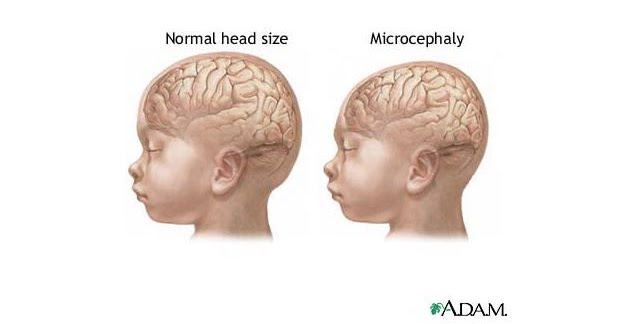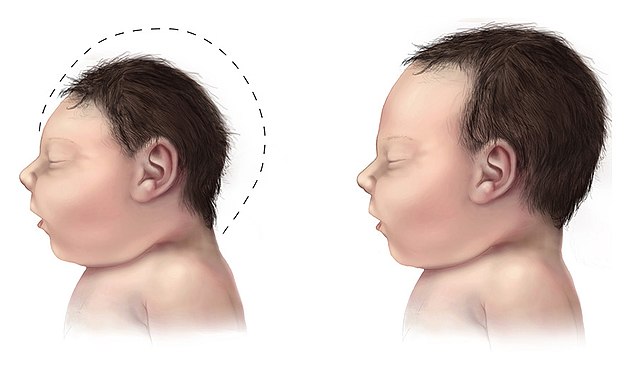Microcephaly, often abbreviated as MCPH, is a medical condition characterized by an abnormally small head size in infants and young children. This condition is typically diagnosed when the circumference of the head is significantly smaller than the average for the child’s age and gender. Microcephaly can result from various factors, including genetic abnormalities, environmental influences, or complications during pregnancy. Understanding its causes, recognizing its symptoms, and exploring care options are crucial for parents, caregivers, and healthcare providers. In this article, we will delve into the details of this condition to provide a comprehensive overview.

What is Microcephaly?
Microcephaly refers to a condition where a child’s head is smaller than expected due to improper brain development. The brain may not grow at the normal rate, leading to a disproportionately small head size. This condition is often identified shortly after birth or during routine developmental check-ups. While some cases of microcephaly are mild and do not significantly affect a child’s quality of life, others can lead to severe developmental delays, intellectual disabilities, and physical challenges.
How is Microcephaly Diagnosed?
- Physical Examination: A healthcare provider measures the circumference of the infant’s head and compares it to standardized growth charts.
- Imaging Tests: Techniques such as ultrasound, magnetic resonance imaging, or computed tomography scans may be used to assess brain structure and identify abnormalities.
- Developmental Assessments: Observing the child’s motor skills, cognitive abilities, and overall development helps determine the severity of the condition.
Causes of Microcephaly
The causes of microcephaly can vary widely, ranging from genetic factors to environmental influences. Below are some of the most common causes:
Genetic Factors
In some cases, microcephaly is inherited through genetic mutations passed down from one or both parents. These mutations can interfere with the normal development of the brain, leading to a smaller head size. Conditions such as Down syndrome, Rett syndrome, and certain metabolic disorders may also be associated with microcephaly.
Prenatal Infections
Infections during pregnancy can have a significant impact on fetal brain development. Some of the most common infections linked to microcephaly include:
- Zika Virus: This mosquito-borne virus gained global attention due to its association with microcephaly in newborns.
- Toxoplasmosis: Caused by a parasite found in undercooked meat and cat feces, this infection can harm the developing fetus.
- Rubella: Also known as German measles, this viral infection can lead to congenital defects if contracted during pregnancy.
- Cytomegalovirus: A common virus that can cause severe complications when transmitted from mother to baby during pregnancy.
Environmental Factors
Exposure to harmful substances or conditions during pregnancy can increase the risk of microcephaly. These factors include:
- Malnutrition: Inadequate intake of essential nutrients, particularly folic acid, can impair fetal brain development.
- Alcohol Consumption: Drinking alcohol during pregnancy can lead to fetal alcohol syndrome, which is often associated with microcephaly.
- Drug Use: The use of illicit drugs or certain medications during pregnancy may harm the developing brain.
- Radiation Exposure: High levels of radiation, such as those from X-rays or other medical procedures, can pose risks to the fetus.
Complications During Pregnancy
Certain complications during pregnancy can also contribute to microcephaly. These include:
- Placental Insufficiency: When the placenta does not provide adequate oxygen and nutrients to the fetus, brain development may be affected.
- Premature Birth: Babies born prematurely may experience delayed brain growth, leading to microcephaly.
- Lack of Oxygen: Conditions such as umbilical cord prolapse or prolonged labor can deprive the baby of oxygen, resulting in brain damage.
Symptoms of Microcephaly
The symptoms of microcephaly can vary depending on the severity of the condition and the underlying cause. Some children may exhibit only mild symptoms, while others may face more significant challenges. Common signs and symptoms include:
Physical Characteristics
- A noticeably smaller head size compared to peers
- A high-pitched cry in infants
- Poor muscle tone or excessive stiffness
- Facial deformities, such as a sloping forehead
Developmental Delays
- Delayed speech and language skills
- Difficulty with coordination and balance
- Learning disabilities or intellectual impairment
- Challenges with social interactions
Associated Health Issues
- Seizures or epilepsy
- Hearing loss or vision problems
- Feeding difficulties in infants
- Frequent respiratory infections
Care Options for Children with Microcephaly
While there is no cure for microcephaly, early intervention and supportive care can help improve the quality of life for affected children. Treatment plans are tailored to the individual needs of each child and may involve a multidisciplinary approach. Below are some of the most common care options:
Medical Management
Regular monitoring by healthcare professionals is essential to address any health issues associated with microcephaly. This may include:
- Medications to manage seizures or other symptoms
- Treatment for hearing or vision problems
- Nutritional support to ensure proper growth and development
Therapies and Interventions
Various therapies can help children with microcephaly reach their full potential. These interventions focus on improving physical, cognitive, and social skills:
- Physical Therapy: Exercises to enhance muscle strength, coordination, and mobility.
- Occupational Therapy: Activities to develop fine motor skills and promote independence in daily tasks.
- Speech Therapy: Techniques to improve communication and language abilities.
- Behavioral Therapy: Strategies to address emotional and behavioral challenges.
Educational Support
Children with microcephaly often benefit from specialized educational programs designed to meet their unique needs. These programs may include:
- Individualized education plans to address learning disabilities
- Small classroom settings with personalized attention
- Assistive technologies to aid in communication and learning
Family Support and Counseling
Caring for a child with microcephaly can be emotionally challenging for families. Access to support groups, counseling services, and community resources can provide much-needed assistance. Parents and caregivers can also benefit from education about the condition and strategies for managing day-to-day challenges.
Support Groups
- Connecting with other families facing similar challenges
- Sharing experiences and advice
- Accessing information about the latest research and treatments
Counseling Services
- Emotional support for parents and siblings
- Guidance on coping with stress and anxiety
- Strategies for fostering a positive family dynamic
Preventing Microcephaly
While not all cases of microcephaly can be prevented, certain measures can reduce the risk. Pregnant women are encouraged to adopt healthy lifestyle practices and avoid exposure to harmful substances. Key preventive steps include:
- Attending regular prenatal check-ups to monitor fetal development
- Consuming a balanced diet rich in folic acid and other essential nutrients
- Avoiding alcohol, tobacco, and illicit drugs during pregnancy
- Getting vaccinated against infections such as rubella and cytomegalovirus
- Using insect repellent and wearing protective clothing to prevent mosquito bites in areas affected by the Zika virus
Public Health Initiatives
Governments and health organizations play a vital role in preventing microcephaly through public awareness campaigns and vaccination programs. Educating communities about the importance of prenatal care and the risks associated with infections can help reduce the incidence of this condition.





